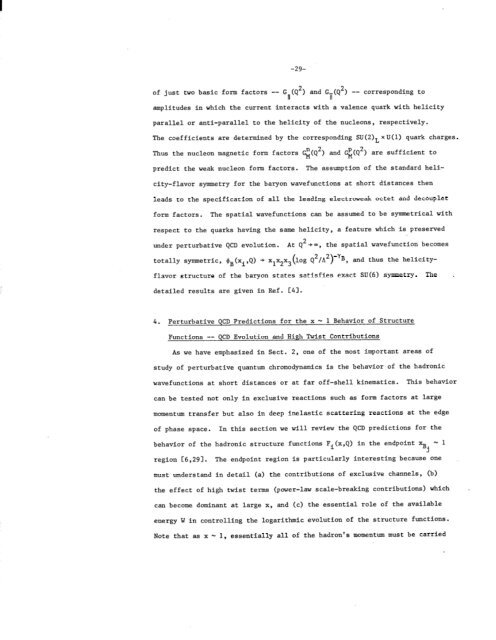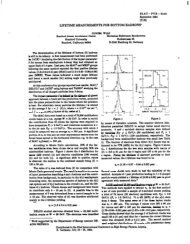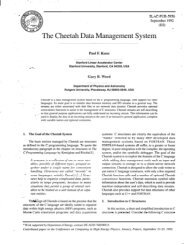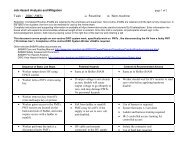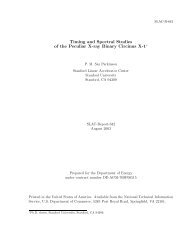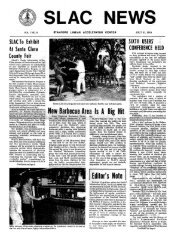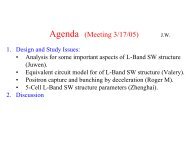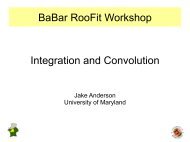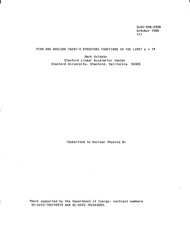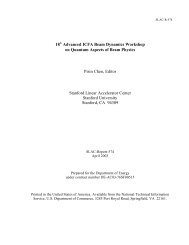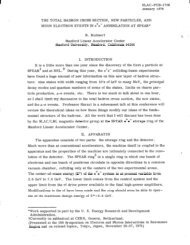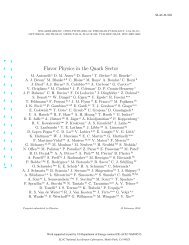slac-pub-2605 - SLAC - Stanford University
slac-pub-2605 - SLAC - Stanford University
slac-pub-2605 - SLAC - Stanford University
You also want an ePaper? Increase the reach of your titles
YUMPU automatically turns print PDFs into web optimized ePapers that Google loves.
-29-<br />
of just two basic form factors -- G (Q2) and Gii(Q2) -- corresponding to<br />
II<br />
amplitudes in which the current interacts with a valence quark with helicity<br />
parallel or anti-parallel to the helicity of the nucleons, respectively.<br />
The coefficients are determined by the corresponding SU(2)LxU(1) quark charges.<br />
Thus the nucleon magnetic form factors $(Q2) and $(Q2) are sufficient to<br />
predict the weak nucleon form factors. The assumption of the standard heli-<br />
city-flavor symmetry for the baryon wavefunctions at short distances then<br />
leads to the specification of all the leading electroweak octet and decouplet<br />
form factors. The spatial wavefunctions can be assumed to be symmetrical with<br />
respect to the quarks having the same helicity, a feature which is preserved<br />
under perturbative QCD evolution. At Q'+=, the spatial wavefunction becomes<br />
totally symmetric, +B(x,,Q) + x1x2x3 (log Q~/A~)-'B, and thus the helicity-<br />
flavor structure of the baryon states satisfies exact SU(6) symmetry. The<br />
detailed results are given in Ref. 141.<br />
4. Perturbative QCD Predictions for the x -. 1 Behavior of Structure<br />
Functions -- QCD Evolution and High Twist Contributions<br />
As we have emphasized in Sect. 2, one of the most important areas of<br />
study of perturbative quantum chromodynamics is the behavior of the hadronic<br />
wavefunctions at short distances or at far off-shell kinematics. This behavior<br />
can be tested not only in exclusive reactions such as form factors at large<br />
momentum transfer but also in deep inelastic scattering reactions at the edge<br />
of phase space. In this section we will review the QCD predictions for the<br />
behavior of the hadronic structure functions Fi(x,Q) in the endpoint xB m 1<br />
j<br />
region C6,291. The endpoint region is particularly interesting because one<br />
must understand in detail (a) the contributions of exclusive channels, (b)<br />
the effect of high twist terms (power-law scale-breaking contributions) which<br />
can become dominant at large x, and (c) the essential role of the available<br />
energy W in controlling the logarithmic evolution of the structure functions.<br />
Note that as x w 1, essentially all of the hadron's momentum must be carried


